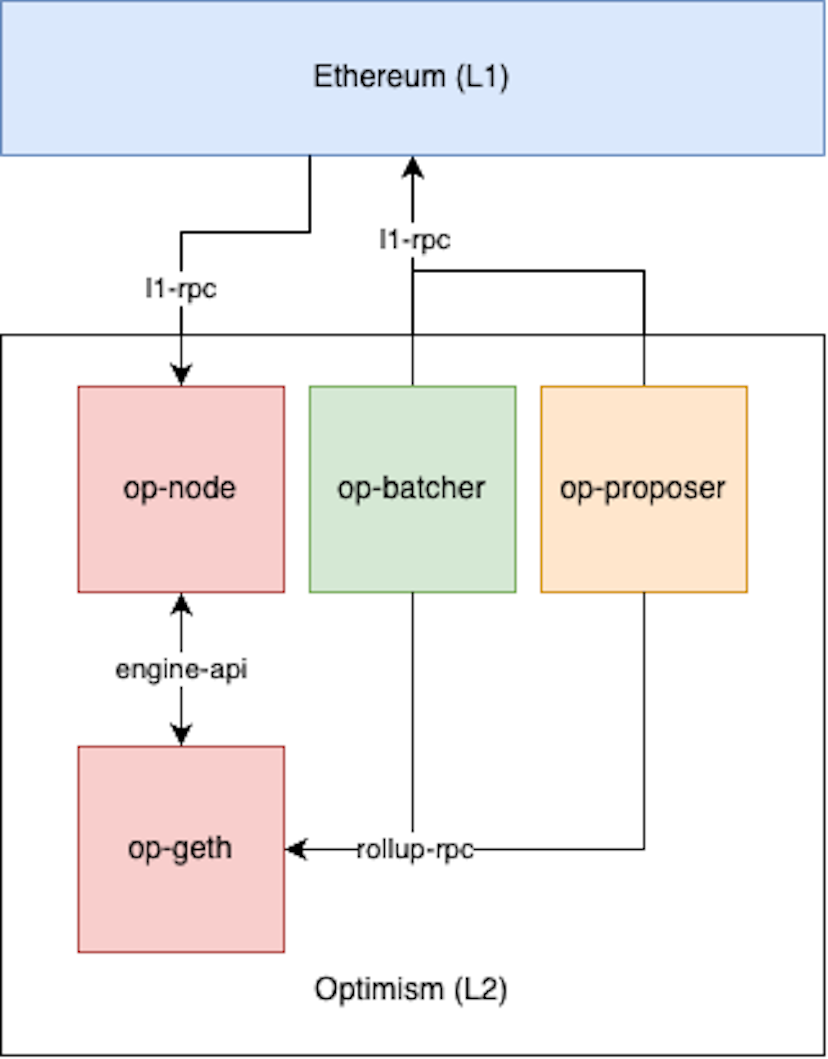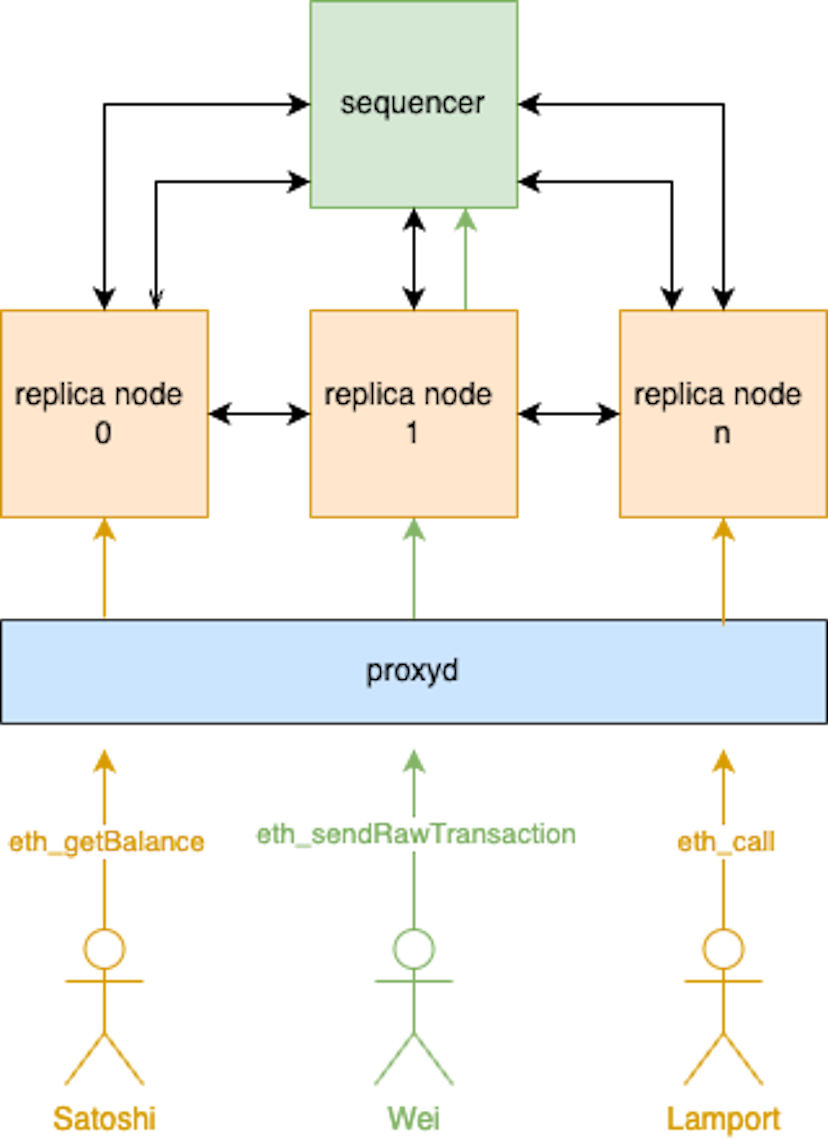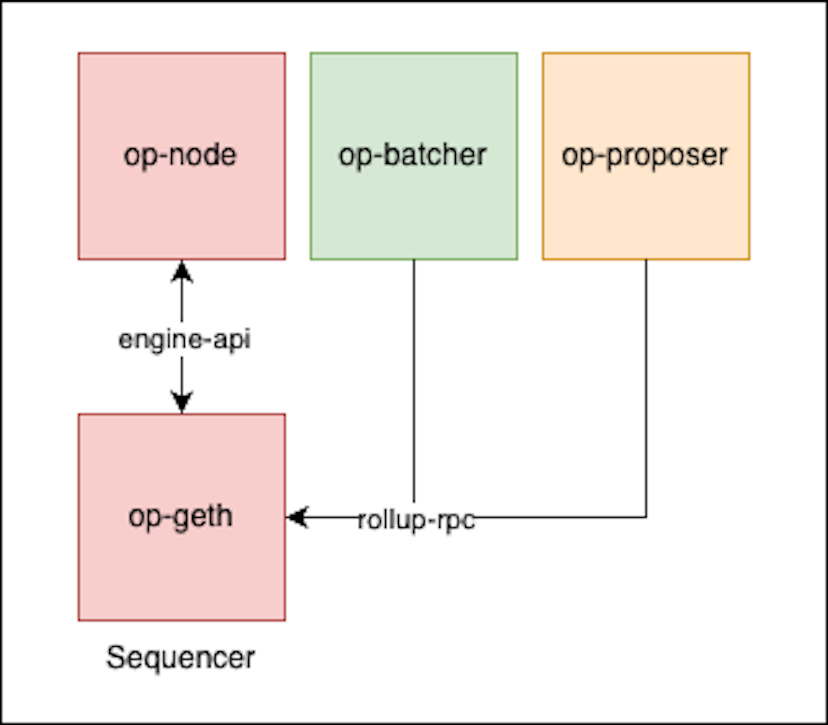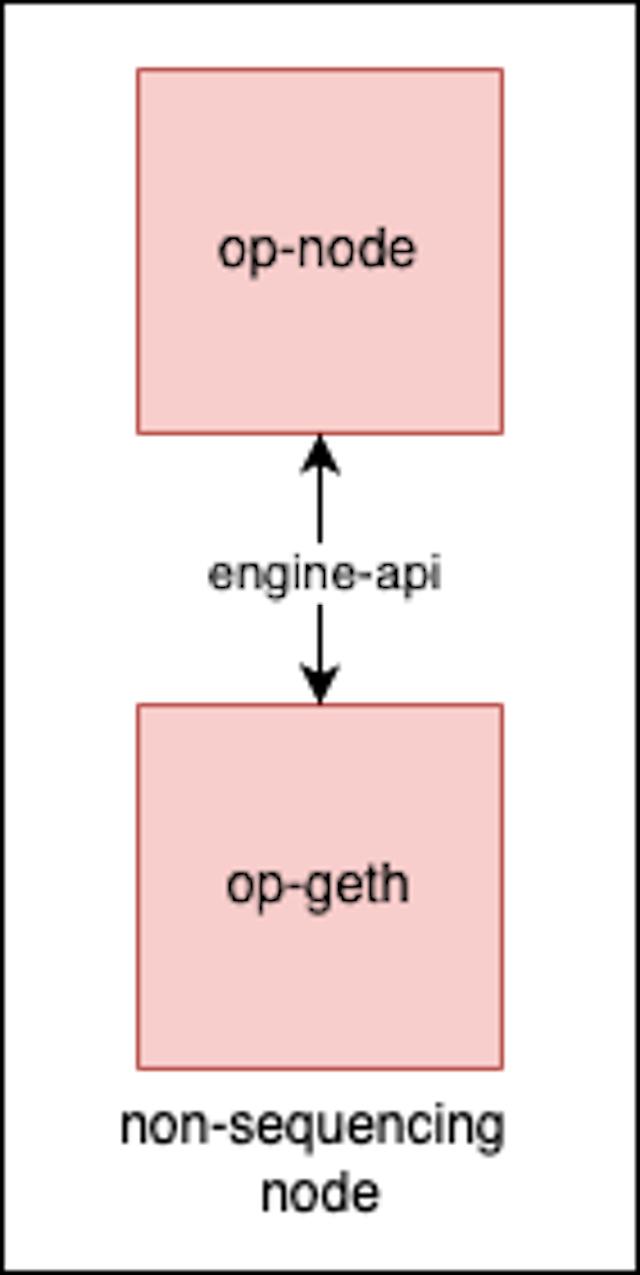Chain Architecture
This page contains information about the components of the rollup protocol and how they work together to build the layer 2 blockchain from the Chain Operator's perspective. The OP Stack is built in such a way that it is as similar to Ethereum as possible. Like Ethereum, the OP Stack has execution and consensus clients. The OP Stack also has some privileged roles that produce L2 blocks. If you want a more detailed view of the OP Stack protocol, check out the OP Stack section of our documentation.
Permissioned Components
These clients and services work together to enable the block production on the L2 network.
Sequencer nodes (op-geth + op-node) gather proposed transactions from users.
The batcher submits batch data to L1 which controls the safe blocks and ultimately
controls the canonical chain. The proposer submits output roots to L1 which control
L2 to L1 messaging.

op-geth
op-geth implements the layer 2 execution layer, with minimal changes (opens in a new tab)
for a secure Ethereum-equivalent application environment.
op-node
op-node implements most rollup-specific functionality as the layer 2
consensus layer, similar to a layer 1 beacon-node. The op-node is stateless and gets
its view of the world from op-geth.
op-batcher
op-batcher is the service that submits the L2 Sequencer data to L1, to make it available
for verifiers. To reduce the cost of writing to the L1, it only posts the minimal
amount of data required to reproduce L2 blocks.
op-proposer
op-proposer is the service that submits the output roots to the L1. This is to enable
trustless execution of L2-to-L1 messaging and creates the view into the L2 state from
the L1's perspective.
Ingress Traffic
It is important to setup a robust chain architecture to handle large volumes of RPC requests from your users. The Sequencer node has the important job of working with the batcher to handle block creation. To allow the Sequencer to focus on that job, you can peer replica nodes to handle the rest of the work.
An example of this would be to configure proxyd (opens in a new tab)
to route RPC methods, retry failed requests, load balance, etc. Users sending
eth_sendRawTransaction requests can have their requests forwarded directly to the
Sequencer. All other RPC requests can be forwarded to replica nodes.

proxyd
This tool is a RPC request router and proxy. It does the following things:
- Whitelists RPC methods.
- Routes RPC methods to groups of backend services.
- Automatically retries failed backend requests.
- Track backend consensus (latest, safe, finalized blocks), peer count and sync state.
- Re-write requests and responses to enforce consensus.
- Load balance requests across backend services.
- Cache immutable responses from backends.
- Provides metrics to measure request latency, error rates, and the like.
Sequencer
The Sequencer node works with the batcher and proposer to create new blocks. So it should
handle the state changing RPC request eth_sendRawTransaction. It can be peered with
replica nodes to gossip new unsafe blocks to the rest of the network.

Replica node
The replica nodes are additional nodes on the network. They can be peered to the Sequencer, which might not be connected to the rest of the internet, and other replicas. Additional replicas can help horizontally scale RPC requests.

Next Steps
- Find out how you can support snap sync on your chain.
- Find out how you can utilize blob space to reduce the transaction fee cost on your chain.